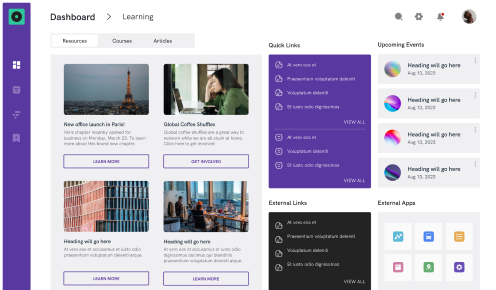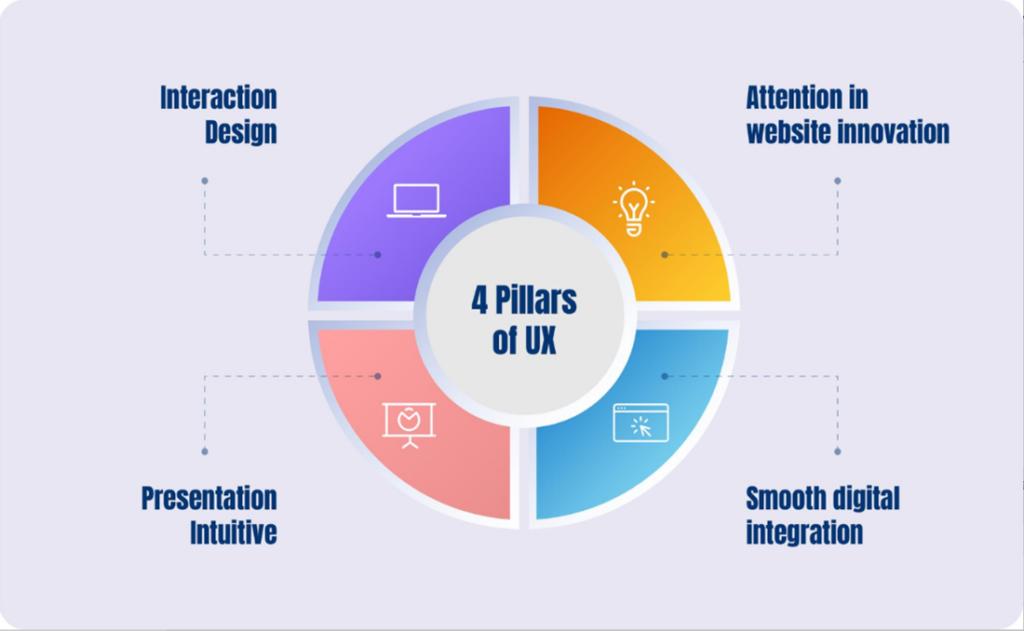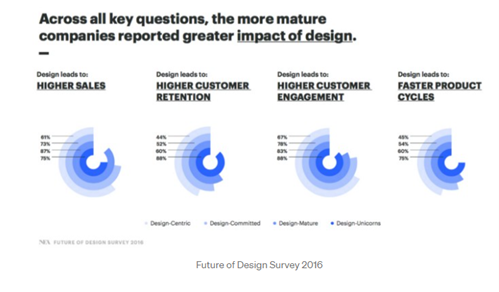5 Tricks of Digital UX to Reboot your Web Experience
 By Srushti Malunde
By Srushti Malunde
 11th January, 2021
11th January, 2021
UI/UX Design
Interactive UX
Mobile UX
Website UX
Digital user experience or digital experience (DX) is the reaction of an end-user after an interaction in a digital environment. Earlier, digital user experience was considered as the field of web designers and related to elements like webpage colors, navigability, layout, and performance. But today’s scenario has changed a lot, and DX is about how intuitive a webpage or app is, how effectively users can complete their tasks, and how well integrated the product is with other applications.
Factors of Digital UX
A strong user experience needs an efficient design team that brings value to an organization by increasing customers, sales, and organization productivity. The scope of DX has broadened as the sophistication of online environments has grown and diversified beyond a webpage to encompass wearables as well as applications incorporate with virtual reality and augmented reality. DX creates customer loyalty with effectiveness, improves conversion rates, as well as creates the appropriate customer-to-company circle. It reduces support costs since your digital user experience design forges your user’s habits.
As a business owner, you need to analyze how your business is approaching digital user-experience.
4 pillars of digital user experience
According to a survey result, if a webpage takes 10 seconds to load, 50%* of users give up and leave the page. The poor digital experience of users can create a negative impact on the brand and reduce website traffic. Hence, it is crucial to look at the four main pillars of Digital UX to improve final customer conversion.
Make the design interactive:
Websites, apps, screens almost all digital products need an active response from users who click, open, and scroll. Web designers should first check whether the elements in the screen such as controls, forms, responses, and workflow are well-defined. If not then, you need to
- Keep what you need and dispose of all unnecessary elements that will enhance the graphics of the web page.
- Make the web appearance clear by keeping whitespace between two elements
- Create an effective navigation button with links that are easy to navigate and position the toolbar in an area that makes sense
- Use one or two fonts, place the right information, break up blocks of text, and create short paragraphs as content readability matters a lot in web appearance.
Keep attention to the website innovation
Innovation develops a bridge between today’s experience and tomorrow’s experience. Make sure the value customers get from your website needs to match the amount of effort and resources they have got to invest in the experience. One business should actively measure how users feel about their product/service experience, which will bring opportunities to improve.
Make the presentation intuitive
Your website design should make a user interface as easy, effective, and emotionally resonant as possible for customers to use. The presentation intuitive must include layouts, grid systems, graphical elements, typography, and other elements.
Four Pillars of digital UX
Apply smooth digital integration
All the digital and non-digital touchpoints need to be interconnected and consistent with each other. If users get a seamless journey to experience, then they will automatically trust your brand.
Here I have also mentioned what to prioritize as your organization doubles down on digital UX.
1. Scale up your design architect
You will probably need more capacity and efficiency to up-level the UX of your website or app — in terms of skills, structure, standards, processes, and mix of people. When you are working with your customers, you need to be more focused on their requirements. If the design team has a clear image of project requirements, then it will be easy for them to implement proper solutions and set appropriate design standards. Your design team should first communicate with the internal users from the client-site, analyze their pain points, and initiate the project requirements. Here design leaders play a leading role in up-leveling skills among team members and building a trustworthy relationship with clients by keeping their commitments.
2. Outsource experience designer if you need
Maybe your organization does not have a design team, or there is no option to hire a design team, then outsource an experienced design consultant is an easy option for you. Outsourcing a web or an app designing expert team will expose you to interact with so many experts and creative architects. It will allow you to get access to the latest high-tech resources as well. An experienced designer will understand your business requirements and equip you with highly innovative, user-friendly, and latest web designs. According to a Forrester research report, a digital UX could boost your conversion rate by up to 400%** with higher sales, higher customer engagement, and faster product cycle.
3. Review and do usability testing rigorously
Businesses should never assume that users will bring inconsistencies to their notice and actively measure user experience. It is necessary to conduct a rigorous review and testing for your website performance to measure how your website is contributing to user experience. The process required several techniques, including a heuristic approach in which trained experts will perform key user scenarios, map user experience journey, and do usability testing. You can also contract with a third party (like a UX design consulting firm) to ensure your review objectives, and make sure you hire staff for a project with UX experts, not generalists.
4. Update and implement new thoughts in your UX expertise
There is always room for improvement, so never be too proud that you have designed something perfect. Make sure you are aware of the latest digital design trends and apply best practices in key UX areas. Use alternative approaches in sections like search, navigation, clarity of the content, accessibility, and others.
5. Visual and experience consistency
Visual consistency matters a lot to offer a great digital experience. A brand should maintain consistency in user-experiences in their product design across a range of products. Along with that, companies must follow consistency in offering digital experiences for which they must invest in UX design. Surprisingly, 65%* of companies have no thinking behind consistency in user experience. Inovar designers help clients to maintain consistency in the digital user experience through human-centric UX design.
The above artifacts will help you to understand how customer experiences are now essential for every business and how digital UX can redeem the pace. Now it is your turn to take views from your employees and users about what they would like to see and dig deeper into opportunities that an individual UX/UI can provide. Designers will have greater flexibility and more time to make impactful designs, and websites will finally have room to become more user-centric in 2021.
I would like to hear from you how your organization is coping with the challenges of ensuring high-quality UX at this historic time? If you are interested in contact with a design expert to get viable solutions for your website, then reach out to a UX design company like Inovar Tech.
References
* YUJ Developers, What is Digital User Experience? Retrieved from: https://medium.com/@yujsocial/what-is-digital-user-experience-cb82ceefae0d























